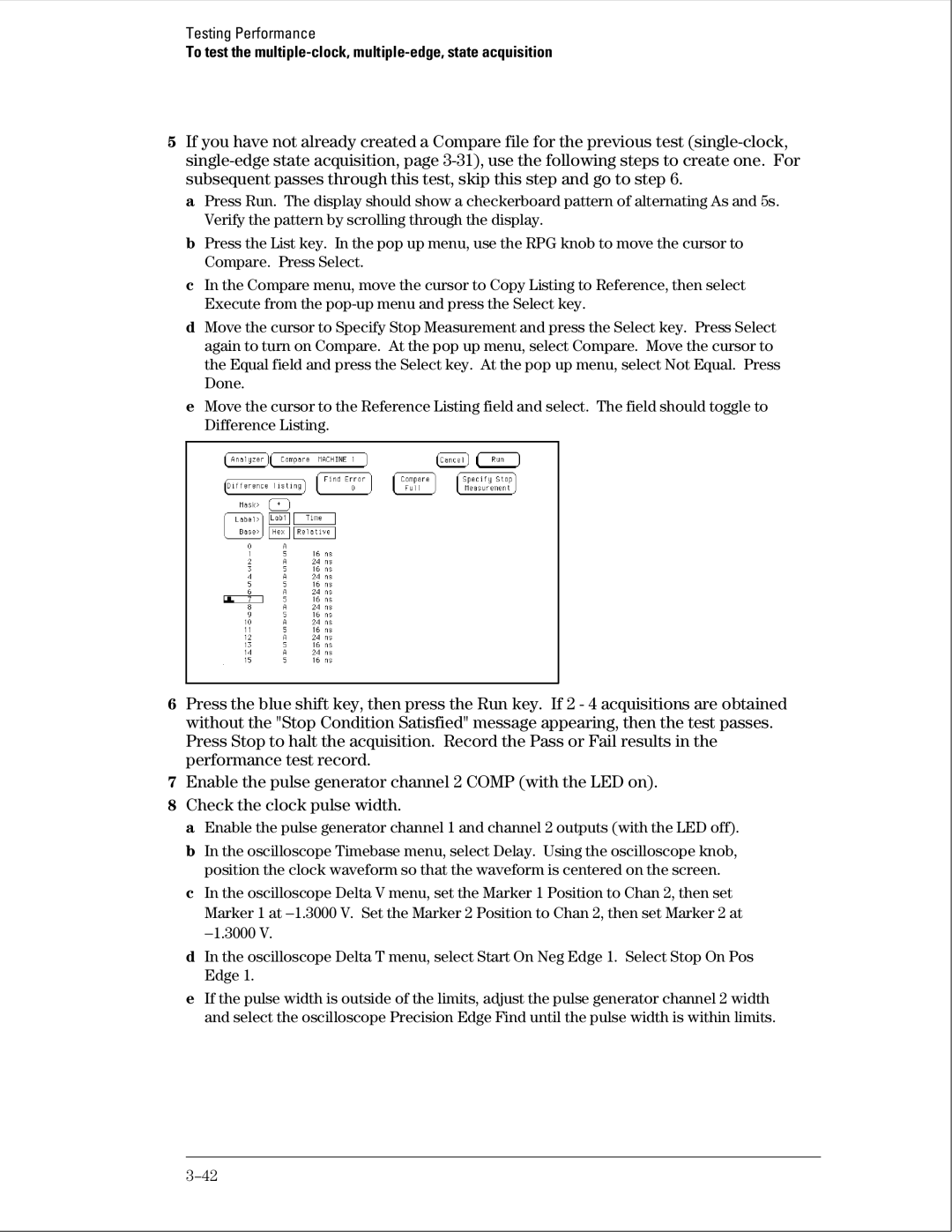
Testing Performance
To test the multiple-clock, multiple-edge, state acquisition
5If you have not already created a Compare file for the previous test
a Press Run. The display should show a checkerboard pattern of alternating As and 5s. Verify the pattern by scrolling through the display.
b Press the List key. In the pop up menu, use the RPG knob to move the cursor to Compare. Press Select.
c In the Compare menu, move the cursor to Copy Listing to Reference, then select Execute from the
d Move the cursor to Specify Stop Measurement and press the Select key. Press Select again to turn on Compare. At the pop up menu, select Compare. Move the cursor to the Equal field and press the Select key. At the pop up menu, select Not Equal. Press Done.
e Move the cursor to the Reference Listing field and select. The field should toggle to Difference Listing.
6Press the blue shift key, then press the Run key. If 2 - 4 acquisitions are obtained without the "Stop Condition Satisfied" message appearing, then the test passes. Press Stop to halt the acquisition. Record the Pass or Fail results in the performance test record.
7Enable the pulse generator channel 2 COMP (with the LED on).
8 Check the clock pulse width.
a Enable the pulse generator channel 1 and channel 2 outputs (with the LED off).
bIn the oscilloscope Timebase menu, select Delay. Using the oscilloscope knob, position the clock waveform so that the waveform is centered on the screen.
cIn the oscilloscope Delta V menu, set the Marker 1 Position to Chan 2, then set Marker 1 at −1.3000 V. Set the Marker 2 Position to Chan 2, then set Marker 2 at −1.3000 V.
dIn the oscilloscope Delta T menu, select Start On Neg Edge 1. Select Stop On Pos Edge 1.
eIf the pulse width is outside of the limits, adjust the pulse generator channel 2 width and select the oscilloscope Precision Edge Find until the pulse width is within limits.
